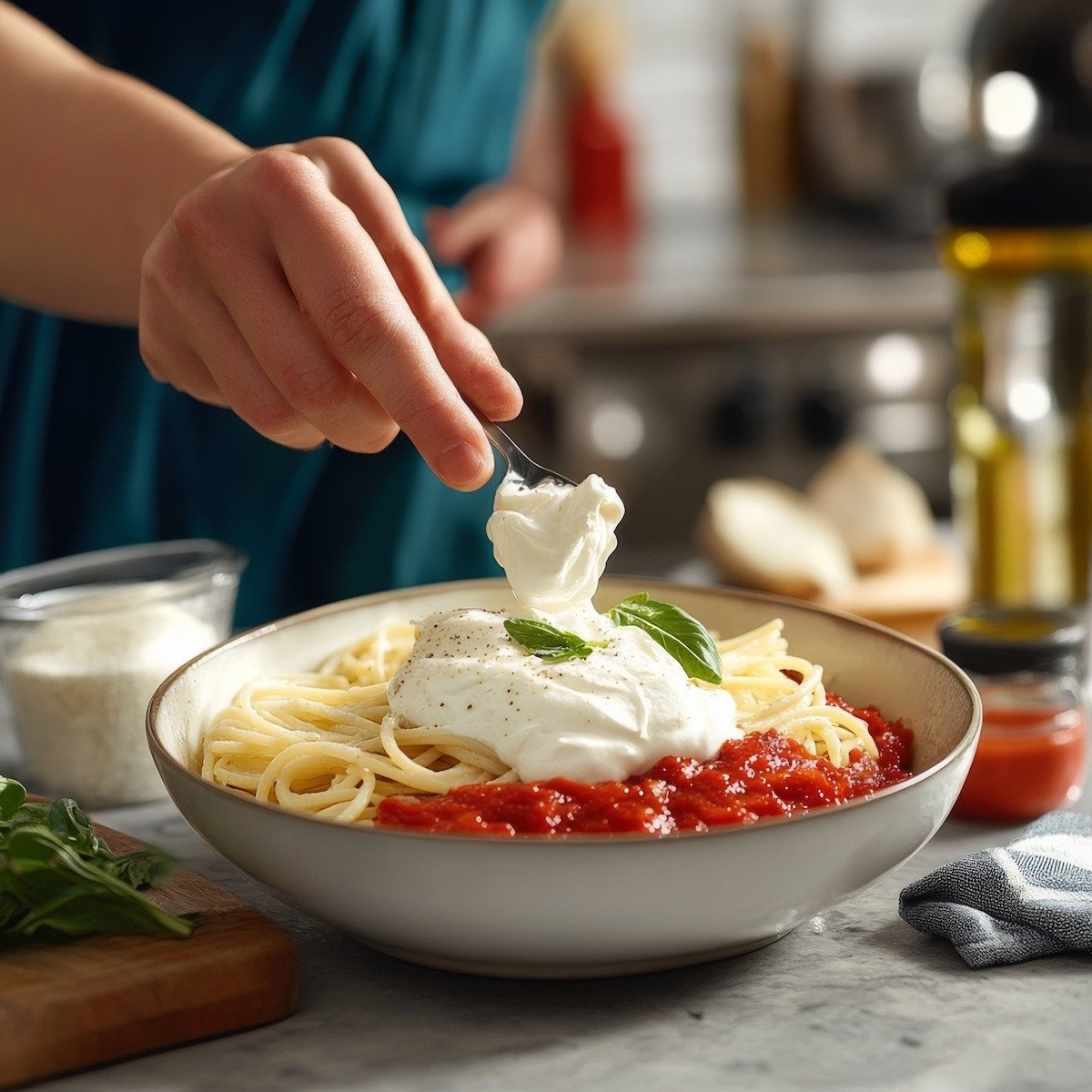

The Ultimate Guide to Crème Fraîche: History, Uses, and Recipes
Crème fraîche is widely appreciated for its rich, tangy flavor and velvety texture, making it a versatile addition to sweet and savory dishes.
Originating from France, this cultured cream is often recognized for enhancing sauces, soups, and desserts with a smooth, luxurious consistency. Unlike sour cream, crème fraîche is less likely to curdle when heated, allowing it to blend seamlessly into hot dishes without losing its creamy texture.
Chefs and home cooks alike also value it for its subtle complexity, which can elevate even simple recipes. Crème fraîche is traditionally made by adding lactic bacteria to heavy cream, resulting in a thickened product with a distinctively mild tang. In addition to its culinary appeal, crème fraîche is nutritionally favorable, containing beneficial probiotics from the fermentation process.
Crème fraîche can be used as a garnish for fruit, swirled into pasta, or dolloped over a hearty stew. It provides an elegant touch and depth of flavor. Whether used as a substitute for sour cream, yogurt, or heavy cream, crème fraîche offers unique qualities prized in the kitchen. The following sections will explore its versatility, uses, and easy homemade recipe.
Crème Fraîche
Crème fraîche is a cultured cream from France and is made by fermenting heavy cream with bacterial cultures. This process thickens the cream and gives it a subtle, tangy flavor. With a high fat content, usually around 30-40%, crème fraîche is luxuriously smooth, rich, creamy, and slightly sour.
Unlike sour cream, which has a sharper tang and a lower fat content, crème fraîche is more stable when heated. This stability makes it ideal for adding to hot dishes like soups and sauces without curdling, which is why it’s so prevalent in culinary applications. Its mild flavor complements savory and sweet dishes: it can be dolloped on fresh fruit or desserts, swirled into soups for added richness, or mixed into pasta dishes to lend a creamy consistency.
Crème fraîche is also known for its probiotic benefits due to the live cultures used in its creation, which can contribute to gut health. In addition to buying it, crème fraîche can be made at home by combining heavy cream with a small amount of buttermilk or yogurt and then allowing it to ferment at room temperature for several hours until it thickens.

Taste and Mouthfeel
Crème fraîche has a rich, creamy taste with a milder tanginess than sour cream. The flavor is smooth and slightly nutty, with a delicate balance of sweetness and acidity, making it versatile in both sweet and savory dishes.
Its mouthfeel is velvety and smooth, with a thick but not overly heavy texture. When used in cooking, it adds a luxurious creaminess to sauces, soups, and dressings without feeling greasy or overly rich.
The smooth consistency allows it to melt seamlessly into dishes, creating a silky finish that coats the palate without overwhelming other flavors. Its mild tang adds a refreshing note, offering complexity without being sharp or overpowering. This makes it an ideal addition to various dishes, from savory meats and vegetables to desserts.
History
Crème fraîche has a rich history rooted in the culinary traditions of France. Its origins date back to rural French dairies, particularly in Normandy and Brittany, regions known for their high-quality dairy products.
Historically, crème fraîche emerged from the natural fermentation that would occur when raw, unpasteurized cream was left to sit in a cool place, allowing naturally occurring lactic acid bacteria to thicken the cream and give it a subtle tang. This process made crème fraîche an essential part of rural cooking and a way to preserve cream before refrigeration was available.
By the early 20th century, with advancements in dairy production, crème fraîche began to be produced more systematically across Europe. The French name “crème fraîche,” meaning “fresh cream,” became widely used as a nod to its mild, fresh flavor.
Over time, culturing cream spread internationally, and crème fraîche became popular in upscale culinary circles beyond France. Today, it is a staple in professional kitchens worldwide, valued for its versatility, luxurious texture, and unique flavor. Its influence can be seen in numerous cuisines, where it’s used in everything from sauces and soups to pastries and desserts.
Ways Crème Fraîche Can Be Used In Cooking
📖 Recipe
Crème Fraîche
You can make crème fraîche at home with just two ingredients and a bit of patience.
Ingredients
- 1 cup heavy cream preferably unpasteurized or pasteurized, but not ultra-pasteurized
- 1 tablespoon buttermilk or plain yogurt
Instructions
Cover and let it sit
-
Cover the jar with a clean kitchen towel or lid, but don’t seal it completely airtight. The cream needs exposure to air for fermentation. Leave the mixture at room temperature (ideally around 70°F or 21°C) for 12 to 24 hours.
Check the consistency
-
After the resting period, the cream should have thickened and developed a tangy flavor. It will be smooth, creamy, and have a subtle sourness. If it’s not thick enough, let it sit for a few more hours.
Refrigerate
-
Once it reaches the desired consistency, cover the jar with a lid and refrigerate. The crème fraîche will continue to thicken slightly as it chills. It should last for about 1 to 2 weeks in the refrigerator.
Notes
Making crème fraîche at home is a great way to ensure it’s fresh and free from preservatives. Plus, it’s an easy and cost-effective way to enjoy this versatile ingredient!
Discover more from reviewer4you.com
Subscribe to get the latest posts to your email.






